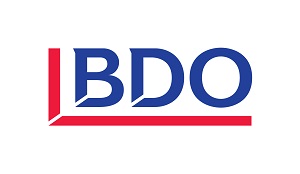 Special to the Philanthropy Journal
Special to the Philanthropy Journal
Laurie De Armond
In the nonprofit community, several organizations have made waves with unforeseen Board shakeups this year. While organizations and their Boards of Directors can come in many shapes and sizes, it’s clear that an ineffective Board can cripple an organization’s financial health and reputation and cause lasting operational damage.
A crucial challenge for both new and long-standing nonprofit organizations is how to find and keep the right leadership group in place. Board members can make or break a nonprofit’s long-term sustainability, depending on their collective abilities, decisions and group dynamic.
How can nonprofit organizations acquire the right mix of Board members and set them up for success?
In order to effectively carry out fiduciary responsibilities, a Board of Directors should be composed of a diverse group with a wide array of experience and skill sets, which can vary depending on an organization’s size, scope and mission.
What are the responsibilities of an effective Board of Directors? At a broad level, they include:
- Supporting the mission of the organization
- Coming prepared to regular meetings, special events and Board retreats
- Serving on Board committees and/or sub-committees
- Contributing financially–or with a resource commitment–on at least an annual basis
- Understanding fiduciary responsibilities, governance and oversight duties
- Responding to organizational needs and requests in a timely manner
- Speaking knowledgably and acting as a voice of the organization
There is some debate as to whether fundraising falls within the scope of the Board’s responsibility. Historically, some organizations saw fundraising as the Board’s primary role. It’s important to note that if fundraising is the responsibility of the Board, it should not come at the expense of strategic thinking and the Board’s ability to carry out fiduciary responsibilities.
Identify Potential Board Members
Even the most solid of Boards will experience turnover at some point in the organization’s life cycle. It’s easier to identify viable prospects using criteria that are as specific and tangible as possible to ensure you’re only considering candidates who would be a good fit for the organization and its mission.
As a starting point, nonprofits can look at individuals who’ve already shown an interested in the mission and the organization’s work. If no qualified candidates have already shown an interest, nonprofits must bolster their efforts to get the organization’s mission and message in front of a bigger pool of potential Board members. Nonprofits should consider appointing one or more leaders or existing Board members to take on this role and assume accountability for advancing the effort, however, organizations don’t need to tackle this task alone. If Board members are overextended or need additional insight, don’t hesitate to seek assistance from a program or outside consultant for Board recruitment plans.
Integrate New Board Members
Once an organization has identified and secured a new Board member, it’s important to foster a sense of Board community immediately so that new members can get acclimated to the culture and begin actively participating faster. Members should receive a manual and thorough orientation to help them get acquainted with standard documents, including the mission and bylaws, expectations for the Board, and a code of conduct or ethics.
Make sure each Board member clearly understands his or her unique role, and make committee assignments where appropriate. Provide a mentor to new Board members, and assign someone to check in periodically to answer any questions, address concerns and make sure the integration process is running smoothly.
The right qualifications, a good cultural fit, dedication to the mission and a solid dynamic among nonprofit leaders are critical for a healthy organization. Nonprofits are wise to invest in putting the right recruiting and onboarding processes in place and to seek out assistance if necessary, to ensure and maintain a qualified and effective Board.
Laurie De Armond is an Assurance Partner and Co-Leader of BDO’s national Nonprofit & Education practice with more than 20 years’ experience providing audit and consulting services to a wide variety of tax-exempt organizations. For more information, please contact Laurie at ldearmond@bdo.com.





